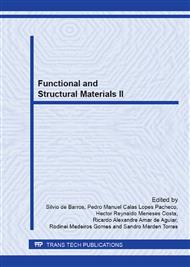p.1
p.11
p.21
p.33
p.41
p.49
p.57
p.65
Influence of Welding Parameters in Substrate/Coating of Galvanized Sheets Using Resistance Spot Welding
Abstract:
The main objective of this work is to propose an optimization of welding parameters through the process of resistance spot welding, applied to Interstitial Free (IF) steel sheets in order to increase the life of conventional copper electrodes. The methodology consisted of using a weld tester in order to ensure the accuracy of values. The main parameters selected through a survey of the weldability were: force, time and welding current. To evaluate the resistance of the weld and the electrode wear, mechanical tests were performed like tensile-shear, cross-tension, peel test and microhardness. A microstructural evaluation by optical microscopy (OM) and scanning electron microscopy (SEM) was made. The results show reducing the thickness of the coating in the weld region and macro and microstructures were observed. Through the tensile-shear and cross-tension tests were verified using electrodes caps up to 1250 points with acceptable welds. The microhardness test results indicated significant hardness increase in weld nugget elucidated by differences in microconstituents evaluated by OM and SEM. The methodology used for parameter selection has highlighted an optimal combination with 200kgf electrodes force, 9cy welding time and 7.8 kA welding current, in overlap IF steel sheets with 0.75mm of thickness, thereby increasing the lifetime of the electrode and ensures a better quality of welds and the consequent reduction of energy applied to the weld process.
Info:
Periodical:
Pages:
33-39
Citation:
Online since:
June 2013
Price:
Сopyright:
© 2013 Trans Tech Publications Ltd. All Rights Reserved
Share:
Citation:


